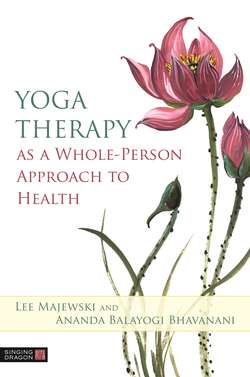Читать книгу Yoga Therapy as a Whole-Person Approach to Health - Lee Majewski - Страница 44
CHAPTER 3 Yoga Therapy and Spirituality
ОглавлениеIn 2015 Kelly Turner PhD, a onco-psychologist, published her research in a book titled Radical Remission: Surviving Cancer Against All Odds, which quickly became a New York Times bestseller.1 She examined over 1000 cases of spontaneous remission from advanced cancer, talked to over 50 non-Western alternative healers from Brazil, China, England, and Zimbabwe, and interviewed over 100 cancer patients who had had spontaneous remission from terminal cancer. After collating all the data, Turner found over 75 healing factors, the following nine of which were mutual to all the cases and were the key to spontaneous healing:
• Deepening spiritual connection
• Having a strong reason for living
• Taking control over one’s health
• Releasing suppressed emotions
• Increasing positive emotions
• Following one’s intuition
• Embracing social support
• Using herbs and supplements
• Radically changing diet.
Turner’s research on spontaneous healing points to what ancient yogis knew thousands of years before: transformation needs to happen on all levels of human existence in order for healing to take place. Pancha kosha points to our existence on five levels simultaneously and homogenously. If we are to start healing, we need to stop looking just at the body and start looking at all levels of human existence. All nine factors mentioned by Turner correlate with the pancha kosha model:
• Three are connected to our spiritual being (anandamaya kosha):
− Deepening spiritual connection
− Having a purpose in life
− Embracing social support.
• Two are connected to our mental being (vijnamaya kosha):
− Taking control over one’s health
− Following one’s intuition.
• Two are connected to our emotional being (manomaya kosha):
− Releasing suppressed emotions
− Increasing positive emotions.
• And finally, two factors necessary for healing on Turner’s list are connected to our physical and energetic body (pranamaya and annamaya koshas):
− Using herbs and supplements
− Radically changing diet.
Some of these findings had already been confirmed earlier by other researchers, who had also looked at the immune system and other factors—for example, moving away from our community and “not belonging” can make us ill and increase our mortality by two to three times.2 Relationships of any sort (good or bad) improve our odds of survival by 50 percent, with the effects of isolation equivalent to smoking 15 cigarettes per day or being an alcoholic, and twice as harmful as being obese.3 Another study4 concluded that the number of groups to which we belong, particularly if we have strong relationships within them, is more vital than any diet or exercise program, and protects us against the worst toxins and greatest adversity.
Sir Martin Brofman postulated that the physical body is influenced by the subtle energy field (emotions and thoughts), which are determined by our consciousness.5 By the same token he suggested that our perception creates our reality. There is no question that today’s scientists and researchers acknowledge the importance of the mind in the health equation. The WHO went even further, defining health as a “state of complete physical, mental and social wellbeing and not merely the absence of disease or infirmity.”6
All of these point to our mind as a source of disturbance and disease. Hence Western scientists assume that there is a problem in the mind. On the other hand, Eastern philosophy states that the mind itself is the core of the problem. Although the healing needs to start with the mind, this is not enough.
It is interesting to see such a correlation between Turner’s findings and ancient Indian wisdom. We may also note that this is totally outside of the traditional medical healthcare paradigm. As we will see, there are more correlations between health, contemporary research, and yoga sciences.
